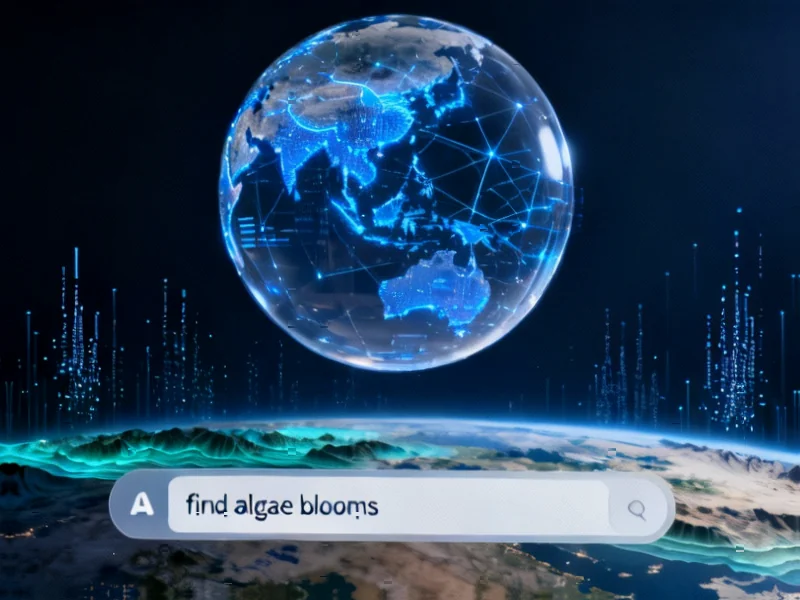Revolutionizing Environmental Monitoring Through AI
Google has developed an innovative approach to mapping Earth’s environmental changes and predicting disaster patterns, according to recent reports. The technology giant has integrated conversational AI capabilities into its Earth platform, allowing users to investigate climate concerns through simple questions, sources indicate.
Table of Contents
The system, known as Google Earth AI, combines the company’s extensive Earth mapping capabilities with its Gemini AI technology. Analysts suggest this integration represents a significant advancement in making complex environmental data accessible to both researchers and the general public.
Transforming Satellite Data into Actionable Insights
At the core of the platform is an AI model called AlphaEarth Foundations, which reportedly processes terabytes of satellite imagery and converts this information into usable data layers. The report states this technology tracks historical changes across the planet’s surface, creating a comprehensive record of environmental transformation.
The combined system enables users to analyze historical landscape data that reveals significant climate shifts over extended periods. According to demonstrations, users can examine rising water levels in flood-prone areas, chart regional surface temperature variations, and assess the effectiveness of clean air initiatives by studying pollution pattern changes.
Conversational Interface for Complex Environmental Queries
The newly revealed capabilities allow users to interact with the AI model using natural language, similar to conversing with a chatbot. Google provided an example where users can request the system to “find algae blooms” to monitor water quality concerns. The platform then searches through satellite images and accumulated data to generate relevant results.
This conversational approach reportedly makes sophisticated environmental analysis accessible to non-experts who can now ask specific questions about their local environment and receive processed information about ecological changes and potential risks.
Tracking Climate Impacts Across Communities and Ecosystems
The technology aims to identify which communities and ecosystems face the greatest risks from environmental changes and disasters. By processing vast amounts of geographical and climate data, the system can help predict vulnerable areas and track the progression of environmental challenges.
Industry observers suggest this development could significantly enhance how organizations and governments prepare for and respond to climate-related emergencies. The ability to quickly access analyzed environmental data through simple queries may improve disaster planning and resource allocation for at-risk regions.
Google Earth AI was initially introduced in July and continues to evolve with these new interactive features. The platform represents one of the most comprehensive attempts to merge artificial intelligence with global environmental monitoring, according to technology analysts familiar with the project.
Related Articles You May Find Interesting
- Wärtsilä Secures Five-Year Performance-Based Maintenance Deal for Brazilian Gas
- Reddit Files Lawsuit Alleging Perplexity AI Illegally Scraped Content Through Th
- Global Economy Faces Triple Threat from AI Speculation, Shadow Banking, and Trad
- Metabolic Network Study Reveals New Constraints on Biochemical Functions
- Brain Connectivity Patterns Reveal Distinct Neural Signatures for Autism and ADH
References
- https://earth.google.com/web/
- https://blog.google/technology/ai/google-earth-ai/
- http://en.wikipedia.org/wiki/Artificial_intelligence
- http://en.wikipedia.org/wiki/Google_Earth
- http://en.wikipedia.org/wiki/Nuclear_fusion
- http://en.wikipedia.org/wiki/Ecosystem
- http://en.wikipedia.org/wiki/Earth
This article aggregates information from publicly available sources. All trademarks and copyrights belong to their respective owners.
Note: Featured image is for illustrative purposes only and does not represent any specific product, service, or entity mentioned in this article.



